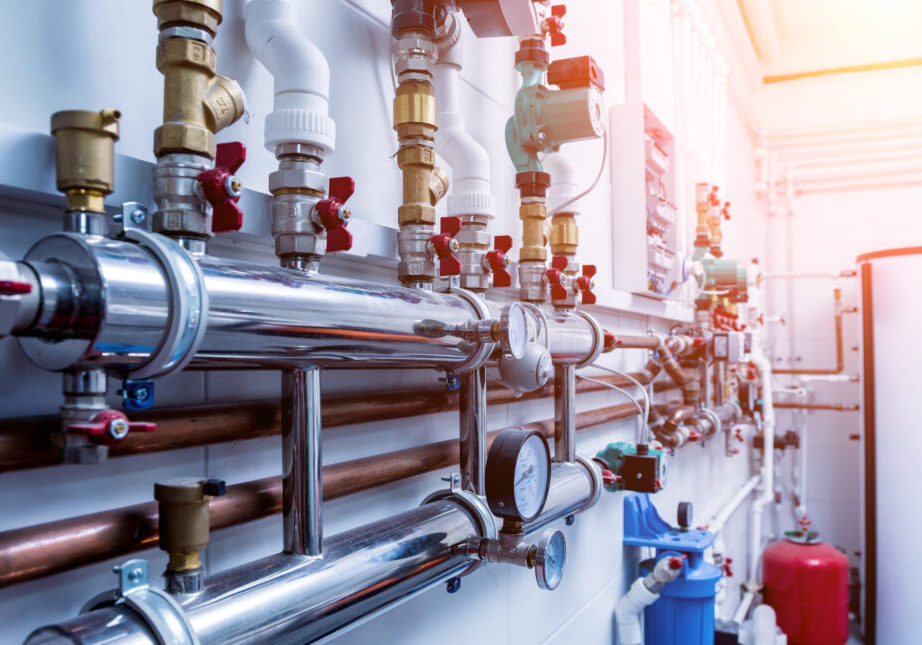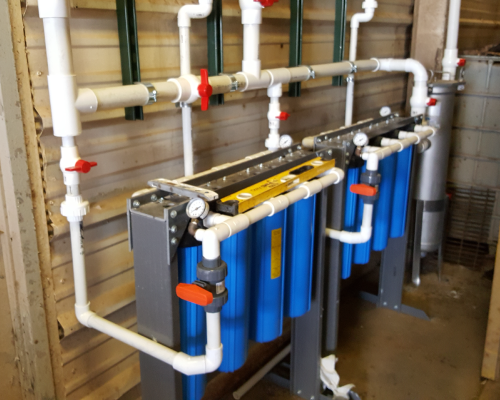Why Your House's Plumbing System Works: Structure
Why Your House's Plumbing System Works: Structure
Blog Article
The article author is making a few good observations about Understanding Your Home's Plumbing Anatomy as a whole in this content just below.

Comprehending exactly how your home's plumbing system functions is essential for every single property owner. From delivering clean water for drinking, food preparation, and showering to safely eliminating wastewater, a well-kept plumbing system is critical for your family members's wellness and convenience. In this detailed guide, we'll check out the elaborate network that comprises your home's pipes and deal ideas on maintenance, upgrades, and managing common issues.
Intro
Your home's pipes system is greater than simply a network of pipes; it's an intricate system that guarantees you have accessibility to tidy water and reliable wastewater elimination. Recognizing its parts and exactly how they collaborate can assist you stop costly fixings and make certain whatever runs smoothly.
Basic Components of a Pipes System
Pipelines and Tubing
At the heart of your pipes system are the pipes and tubes that carry water throughout your home. These can be made from various products such as copper, PVC, or PEX, each with its benefits in terms of durability and cost-effectiveness.
Components: Sinks, Toilets, Showers, etc.
Fixtures like sinks, toilets, showers, and bath tubs are where water is utilized in your home. Recognizing how these fixtures connect to the pipes system assists in detecting issues and intending upgrades.
Shutoffs and Shut-off Points
Valves regulate the flow of water in your pipes system. Shut-off shutoffs are essential during emergencies or when you require to make fixings, permitting you to separate parts of the system without disrupting water flow to the whole home.
Water Supply System
Key Water Line
The major water line links your home to the metropolitan water supply or a personal well. It's where water enters your home and is distributed to different components.
Water Meter and Pressure Regulatory Authority
The water meter actions your water usage, while a pressure regulatory authority guarantees that water moves at a risk-free pressure throughout your home's pipes system, preventing damages to pipelines and fixtures.
Cold Water vs. Warm water Lines
Comprehending the distinction in between cold water lines, which supply water directly from the major, and warm water lines, which carry warmed water from the water heater, assists in troubleshooting and preparing for upgrades.
Drain System
Drain Pipes Water Lines and Traps
Drain pipes carry wastewater away from sinks, showers, and toilets to the drain or septic tank. Catches prevent drain gases from entering your home and likewise trap particles that could trigger obstructions.
Air flow Pipelines
Ventilation pipes allow air into the water drainage system, stopping suction that could slow drainage and trigger traps to vacant. Correct ventilation is vital for keeping the stability of your pipes system.
Importance of Correct Drainage
Guaranteeing correct drain protects against backups and water damages. On a regular basis cleansing drains and keeping traps can protect against costly repairs and extend the life of your plumbing system.
Water Heating System
Kinds Of Hot Water Heater
Hot water heater can be tankless or typical tank-style. Tankless heating systems heat water on demand, while tanks store warmed water for immediate use.
Upgrading Your Plumbing System
Reasons for Upgrading
Upgrading to water-efficient fixtures or changing old pipelines can enhance water quality, reduce water bills, and boost the value of your home.
Modern Pipes Technologies and Their Advantages
Check out technologies like clever leak detectors, water-saving bathrooms, and energy-efficient water heaters that can save money and reduce ecological influence.
Price Factors To Consider and ROI
Calculate the ahead of time prices versus lasting financial savings when thinking about plumbing upgrades. Many upgrades spend for themselves with reduced utility bills and fewer fixings.
Just How Water Heaters Attach to the Pipes System
Comprehending how hot water heater link to both the cold water supply and hot water distribution lines aids in detecting problems like inadequate hot water or leakages.
Maintenance Tips for Water Heaters
Routinely purging your water heater to get rid of debris, checking the temperature level settings, and inspecting for leakages can extend its lifespan and improve power effectiveness.
Usual Pipes Issues
Leakages and Their Causes
Leaks can take place due to aging pipelines, loose installations, or high water stress. Dealing with leaks promptly avoids water damages and mold growth.
Clogs and Obstructions
Clogs in drains and commodes are frequently caused by flushing non-flushable things or an accumulation of grease and hair. Making use of drain displays and bearing in mind what decreases your drains pipes can prevent blockages.
Signs of Plumbing Troubles to Look For
Low tide pressure, slow drains, foul odors, or unusually high water bills are signs of possible pipes issues that should be addressed immediately.
Plumbing Maintenance Tips
Normal Assessments and Checks
Arrange annual pipes assessments to capture problems early. Search for signs of leakages, rust, or mineral build-up in taps and showerheads.
Do It Yourself Maintenance Tasks
Basic tasks like cleansing faucet aerators, checking for toilet leakages making use of color tablets, or insulating revealed pipelines in chilly climates can prevent significant plumbing issues.
When to Call an Expert Plumbing
Know when a pipes problem calls for expert know-how. Trying complex fixings without appropriate knowledge can cause more damages and greater repair work prices.
Tips for Lowering Water Use
Easy habits like dealing with leaks immediately, taking much shorter showers, and running full tons of laundry and recipes can conserve water and lower your energy expenses.
Eco-Friendly Plumbing Options
Consider lasting plumbing products like bamboo for flooring, which is durable and eco-friendly, or recycled glass for counter tops.
Emergency situation Readiness
Steps to Take During a Pipes Emergency
Know where your shut-off shutoffs are located and how to shut off the water in case of a burst pipe or significant leak.
Relevance of Having Emergency Get In Touches With Handy
Maintain contact info for neighborhood plumbings or emergency situation solutions readily offered for fast reaction throughout a plumbing situation.
Environmental Effect and Conservation
Water-Saving Fixtures and Home Appliances
Installing low-flow faucets, showerheads, and commodes can dramatically reduce water usage without sacrificing efficiency.
Do It Yourself Emergency Fixes (When Suitable).
Temporary repairs like making use of duct tape to patch a dripping pipe or placing a container under a leaking faucet can decrease damage up until a specialist plumber shows up.
Verdict.
Understanding the composition of your home's pipes system encourages you to maintain it efficiently, conserving money and time on repairs. By following regular upkeep regimens and staying informed about contemporary pipes modern technologies, you can guarantee your pipes system operates efficiently for years to come.
HOW YOUR PLUMBING SYSTEM WORKS
Which Pipes Do What?
Blue lines = fresh water supply entering the building Red lines = hot water supply entering the building Grey lines = pipes carrying waste away from the building and venting pipes carrying gases away from the building (through the roof) YOUR MAIN PLUMBING SYSTEMS
There are two main plumbing systems that support your home s basic plumbing needs one that brings clean water into your home, and one that sends dirty water away from your home. Connected to the toilet, bath, shower, and other faucets in your home, these two systems keep your water flowing in the right directions.
ACCESSING FRESH WATER
Fresh and clean water is brought into your home through the main water supply line . Filtered through one pipe, this water is pressured to flow into the various fixtures in your home at any given time.
This water can be sourced from a well located on your property, a pond or river (mostly cottages), or, as in most cases, from the city s municipal water treatment centre. However, it is important to note that water that is untreated, such as the water siphoned from ponds or rivers, may not be safe to drink. Personal water supplies always need to be treated for hardness and contaminants before consumed.
MUNICIPAL WATER SUPPLIES
Improve taste and odour Remove sediment Eliminate hardness Reduce chlorine COLD WATER SUPPLY VS. HOT WATER SUPPLY
Cold water flows into your home or building through the service line, which then distributes hot or cold water to your fixtures. This line is most commonly run through a central column that runs floor to floor. Hot water runs in short and straight pipes as the longer the pipeline, the more heat that will be lost in the transfer. Having shorter pipes also allows residents to access hot water more quickly.
WASTE WATER SYSTEM
Your wastewater system is divided into two parts pipes that send wastewater away from your home and venting pipes that send sewer gas away from your home. Sewage water travels through pipes that flush the water and waste towards local sewers that are operated and managed by your city or town. Most sewer systems rely on gravity to move the wastewater to where it needs to go.
The further away from your toilet or sink, the larger wastewater pipes become. This allows for waste to be disposed of from various parts of your home or business at once without pipe blockages. The angle and flow of these pipes are also essential for keeping your waste pipes clear of build up.
https://harrisplumbing.ca/how-your-home-plumbing-system-works/

I recently found that content on Plumbing Installation 101: All You Need to Know while doing a search on the internet. Do you know about somebody who is fascinated about ? Please feel free to share it. I treasure your readership.
Schedule A Free Estimate Report this page